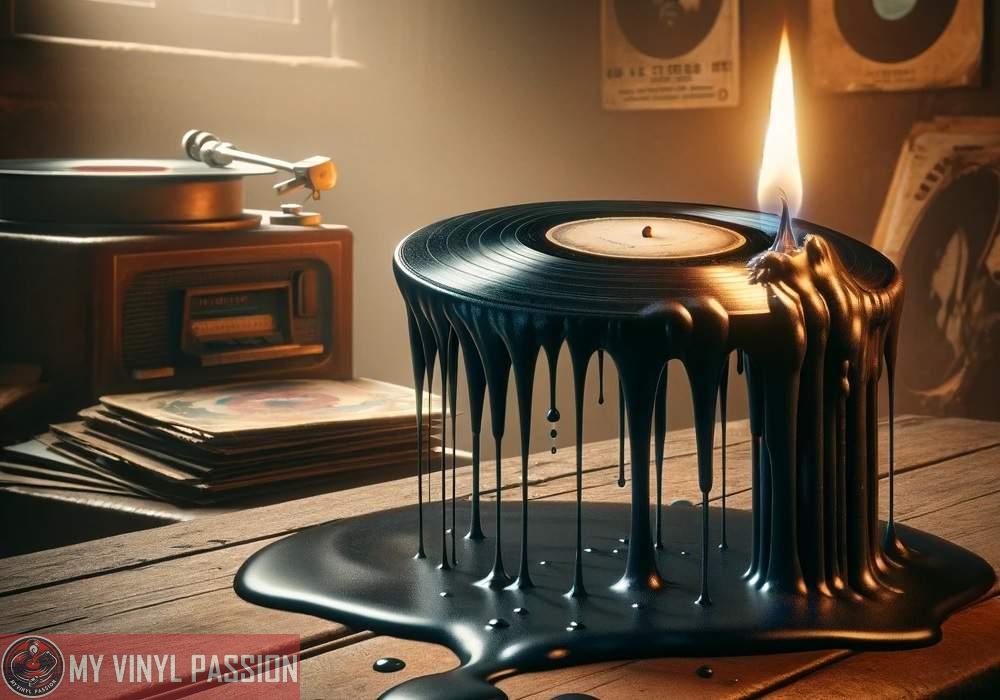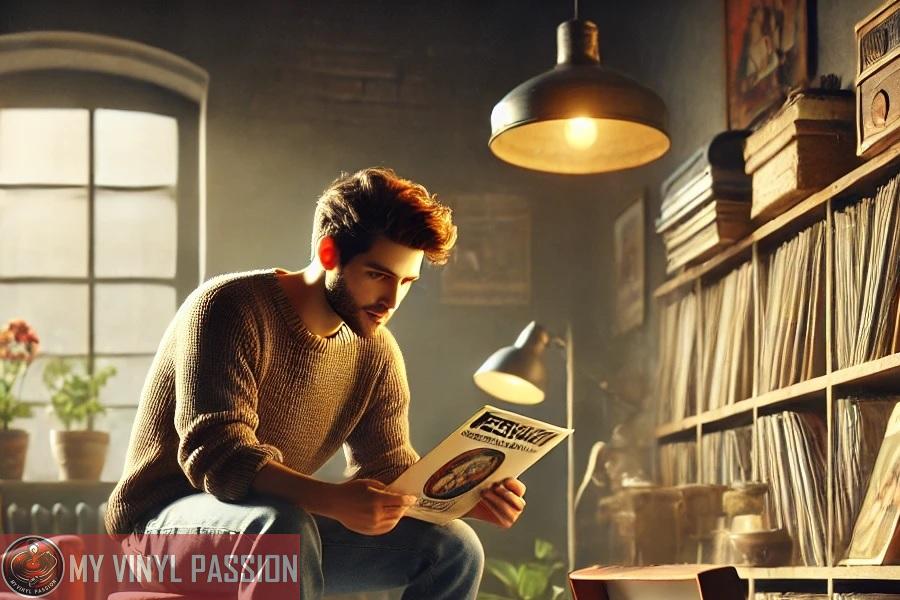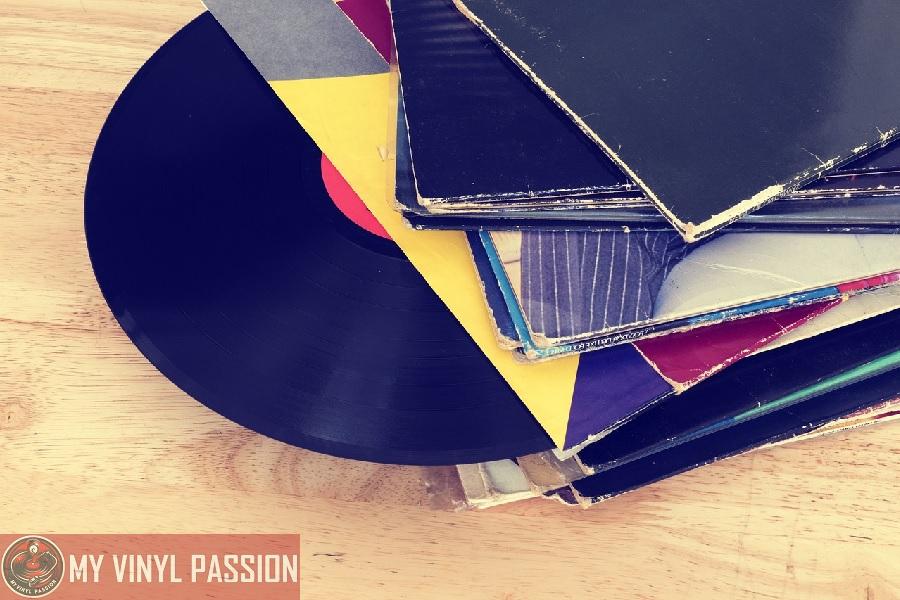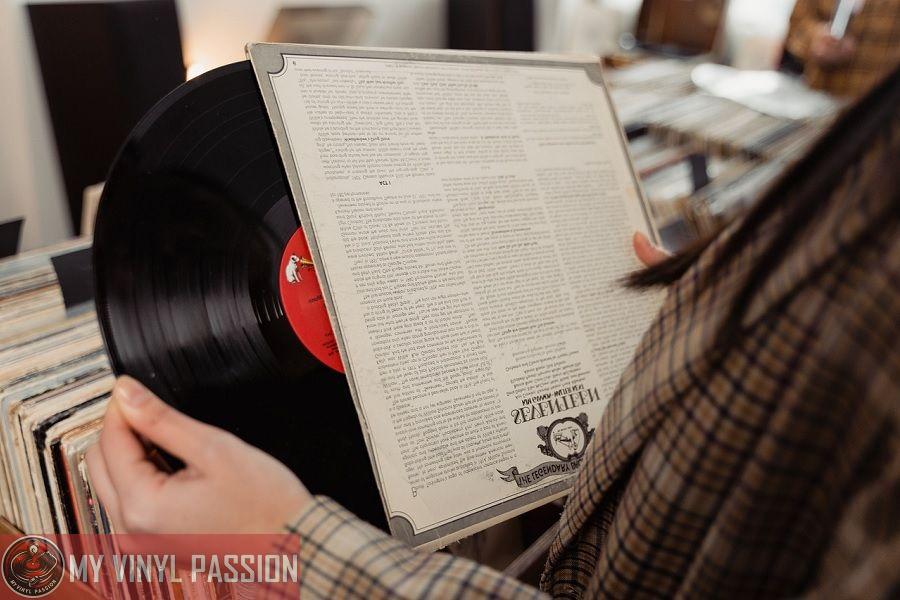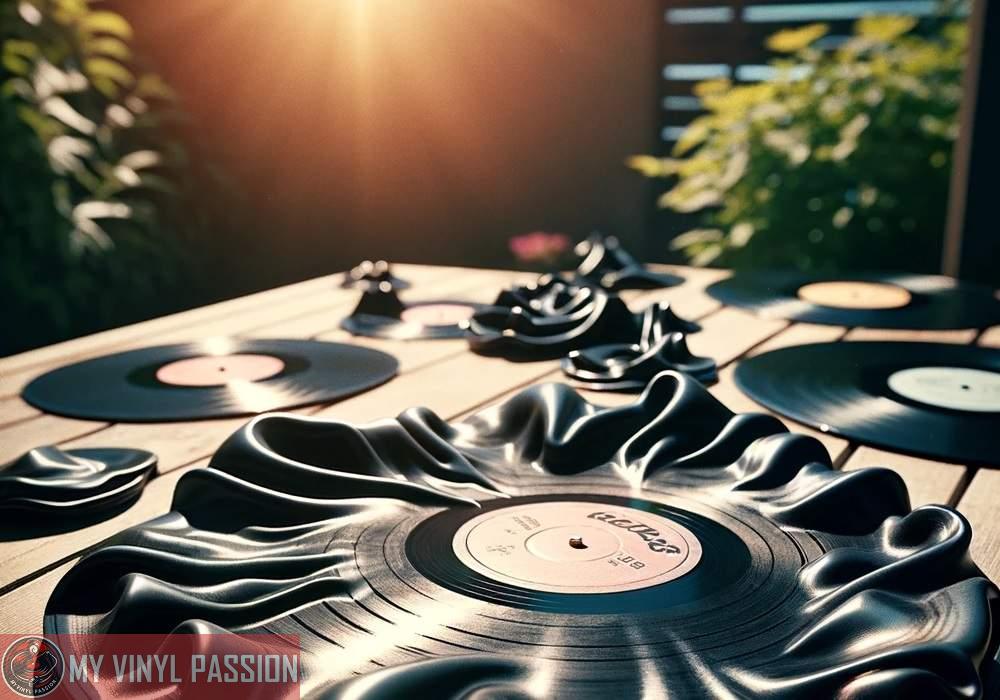Vinyl records have made a remarkable comeback in recent years, cherished for their warm sound and unique listening experience.
But, this love for vinyl also comes with concerns about proper care and storage.
One question that frequently arises among collectors and enthusiasts is whether vinyl records can melt under certain conditions.
It’s important to know that vinyl records can, indeed, melt when exposed to high temperatures. The material used to make vinyl records is a type of plastic called polyvinyl chloride (PVC), which softens when heated and can eventually lose its shape.
This leads to potential distortion and damage that not only ruins the records’ appearance but also has a significant impact on sound quality.
In Summary
Vinyl records can melt when exposed to high temperatures, due to their PVC composition.
Improper storage and handling can lead to permanent damage, affecting both appearance and sound quality.
Proper care, storage, and transportation are crucial to preserving a vinyl collection.
To ensure the longevity of your vinyl collection, it’s essential to understand how heat exposure can cause damage, how to store and handle records properly, and what precautions to take during transportation.
By knowing the ins and outs of vinyl care, you can protect your treasured collection and keep the music playing for years to come.
The Composition of Vinyl Records
When you think of vinyl records, polyvinyl chloride (PVC) is the primary material that comes to mind. Its unique properties lend well to the production of these nostalgic music carriers. To understand the intricate composition, let’s break it down into its primary components:
- PVC: This thermoplastic polymer is the core ingredient in the manufacturing of vinyl records. It provides the necessary rigidity and structural integrity for the record’s grooves.
- Plasticizers: These additives help improve the flexibility and durability of the record. They ensure that the vinyl material doesn’t become brittle over time.
- Pigments: To achieve the classic black color of vinyl records, carbon black pigment is added. However, some records come in different colors, which can be achieved through the addition of other pigments.
- Stabilizers: As PVC can degrade over time when exposed to heat and UV light, stabilizers are incorporated into the vinyl material to prevent this degradation and ensure the record remains in good condition.
With a clear understanding of the basic composition, you can now appreciate the unique makeup of vinyl records. These components work together to provide the ideal listening experience and make vinyl records a collectible item for many music enthusiasts.
Understanding Vinyl Records and Heat
Vinyl records are made from PVC (polyvinyl chloride), a plastic material that can be sensitive to heat. To maintain the quality and lifespan of your records, it’s essential to understand how heat affects them.
Vinyl records have a melting point of about 140°F (60°C), which means they can become deformed or damaged when exposed to high temperatures. However, it’s not only the melting point you should be concerned about.
Even temperatures lower than the melting point can cause warping or distortion to your records. It’s best to store your records in a cool, dry place with a consistent temperature to avoid such issues.
Here are some key temperature points you should be aware of:
- 140°F (60°C) – Melting Point: At this temperature, vinyl records will start to melt and become irreparably damaged.
- 120°F (49°C) – Warping: While not melting, vinyl records can warp and become unplayable at these temperatures.
- 65-75°F (18-24°C) – Ideal Storage Temperature: To keep your vinyl records in the best condition, try to maintain this temperature range in their storage environment.
Heat-resistant storage solutions such as insulated containers can help protect your records from high temperatures. However, it’s still crucial to always be cautious when exposing your records to direct sunlight, heaters, or other heat sources.
In conclusion, understanding the effects of heat on your vinyl records and the importance of maintaining proper storage temperatures will ensure their longevity and maintain their quality.
By being aware of the melting point, warping temperatures, and ideal storage conditions, you can confidently care for your precious collection.
Damage From Heat Exposure
Heat exposure can cause significant damage to your vinyl records. One common issue caused by heat is warping. Warped vinyl records can have noticeable distortion in sound quality and may even be unplayable.
When a vinyl record is exposed to high temperatures, the grooves can be altered, which may result in the loss of the record’s original, flat shape.
One key factor contributing to heat exposure in vinyl records is direct sunlight. Storing records in areas prone to heatwaves or high temperatures can lead to warping. It is essential to store your vinyl records away from direct sunlight and in a cool, dry place to prevent damage.
Here are some tips to keep your records safe from heat:
- Store your records vertically, with some space in between them, for better airflow and minimal pressure.
- Avoid stacking your records, as the weight can contribute to warping.
- Install blinds or curtains if your records are near a window to block direct sunlight.
- Consider placing your vinyl records in anti-static sleeves for an added layer of protection.
In some cases, a slightly warped vinyl record can be repaired using DIY methods like the sandwich method (placing the record between two sheets of glass and leaving it under sunlight), but this comes with risks and is not always effective. Treating severely warped records is best left to professionals, as they possess specialized equipment to address distortion and restore a vinyl record’s flat shape.
Keep in mind that once your vinyl records are exposed to excessive heat, the damage may be irreversible. Warping, distortion, and other heat-related damages can significantly impact the life and quality of your vinyl records.
By taking appropriate precautions, you can ensure the longevity and enjoyment of your vinyl collection.
Storage and Handling of Vinyl Records
Proper storage and handling of your vinyl records is essential to maintain their quality and longevity. To ensure the best storage conditions, always store your records vertically and avoid stacking them horizontally, as this can cause warping and damage.
When it comes to sleeves, it’s crucial to use both inner and outer sleeves. The inner sleeves protect the record from dust and scratches, while the outer sleeves protect the album artwork and help maintain the record’s overall condition.
Opt for polyethylene or anti-static inner sleeves, as they are less likely to scratch or create static charges when removing your vinyl records.
There are several factors to consider when choosing the ideal storage space for your records:
- Temperature: Storing your vinyl records at room temperature is optimal. Aim to maintain a consistent temperature between 65°F and 70°F (18°C to 21°C) to prevent warping or other temperature-related damage.
- Humidity: Keep your records in a relatively low-humidity environment, ideally between 45% and 50% relative humidity. High humidity levels can cause mold growth and lead to a deterioration of both the vinyl records and their sleeves.
- Light: Store records away from direct sunlight or other strong light sources, as prolonged exposure can lead to fading of the album artwork and potentially affect the quality of the vinyl itself.
Here’s a quick checklist for proper storage and handling of vinyl records:
- Invest in high-quality inner and outer sleeves to protect the records and their artwork.
- Always store records vertically and never stack them horizontally.
- Choose a cool, dry place within the recommended temperature and humidity ranges.
- Keep your records away from direct sunlight and strong light sources.
By following these guidelines, you can ensure the proper storage and handling of your vinyl records, keeping them in the best possible condition for years to come.
Impacts on Sound Quality
When considering the potential melting of vinyl records, it is essential to understand the impacts on sound quality. Vinyl records rely heavily on their grooves and the stylus to produce sound.
Any damage or alteration to these components can lead to distortion and degradation of the audio reproduction.
Heating or warping a vinyl record may cause the grooves to change shape or lose form. As the grooves are the basis for the mechanical process of sound reproduction on a turntable, this can have significant consequences on the audio output.
The stylus, which reads these grooves, may not be able to track them accurately, leading to distortion and a loss of sound fidelity.
Furthermore, a damaged or melted record can put stress on your turntable and compromise its performance. An uneven record can put additional pressure on the stylus and cause it to bounce or lose contact with the grooves. This can result in:
- Inconsistent volume levels
- Skipping or missing sections of audio
- Increased wear on the stylus
It is worth noting that the extent of these impacts will depend on the severity of the damage to your vinyl records. Slight warming or minimal distortion may only cause minimal effects on the sound quality, while more severe damage could make the record unlistenable.
To maintain the best possible sound quality, it is crucial to properly store your vinyl records and avoid exposing them to high temperatures or direct sunlight.
This not only preserves the physical integrity of your prized collection but also ensures that you can continue to enjoy their unique sonic characteristics for years to come.
How to Transport Vinyl Records Safely
When transporting your vinyl records, it’s important to keep them secure and protected against potential damage. Follow these simple steps to ensure your records reach their destination in excellent condition.
First, gather the necessary materials for packing your vinyl records. This includes:
- Sturdy cardboard boxes or plastic containers
- Cardboard spacers or dividers
- Bubble wrap or foam padding
- Packing tape
Next, prepare the records for packing by removing any loose items such as posters or inserts, to prevent them from causing damage during transportation. Store these items separately and securely.
Securely pack the records in the following order:
- Place a layer of bubble wrap or foam padding at the bottom of the box.
- Stack the records vertically, with each record facing the same direction.
- Use cardboard spacers to separate individual records or groups of records to ensure they don’t touch each other.
- Fill any remaining empty space with bubble wrap or foam padding to prevent the records from shifting during transport.
- Seal the box or container with packing tape, taking care to prevent any gaps that can cause moisture to seep in.
Label the container with a clear description of its contents, such as “Vinyl Records” or “Music Collection.” This will help you to identify the records once they’ve reached their destination and ensure handlers treat them with care.
When traveling with your records, handle them with caution and consider the conditions of your mode of transport. For instance, if you’re traveling by car, avoid leaving the records in direct sunlight or in a hot vehicle, as excessive heat can cause warping.
If you’re taking a plane, consider carrying the records in your carry-on baggage or shipping them to your destination to avoid potential damage in checked luggage.
By following these guidelines, you can confidently transport your vinyl records safely and ensure they arrive in the best possible condition.
Mishaps and Their Remedies
While vinyl records are cherished by many for their unique sound and nostalgia, they can also be quite sensitive to their environment and suffer from various mishaps. In this section, we will cover some common issues that can occur with vinyl records and provide you with practical remedies to address them.
Stacking and Warping
Avoid stacking your vinyl records, as this can cause them to become warped due to the weight and pressure from other records. Instead, store them vertically and give them enough space to prevent them from leaning or bending.
If you already have a warped record, consider using a vinyl flat — a specialized device designed to slowly heat and flatten a warped record back into shape. Follow the manufacturer’s instructions carefully to avoid damaging your record further.
Mold and Mildew
Mold and mildew can form on your vinyl records if they’re stored in a damp or humid environment. To prevent this, store your records in a cool, dry area, and consider using a dehumidifier to regulate the atmosphere around them.
In case mold or mildew has developed, it is essential to clean the affected records properly. Use a soft, damp (not wet) cloth and a mild cleaning solution that won’t harm the grooves. If the issue persists, seeking professional help from a record cleaning service may be your best option.
Brittle and Breaking Records
Vinyl records can become brittle and susceptible to breaking due to extreme temperatures or improper storage methods. To prevent this, keep your records away from direct sunlight or any heat sources and maintain an ambient temperature of around 65-70°F (18-21°C).
Finding a broken vinyl record can be disheartening, and unfortunately, there is no perfect solution. However, you can attempt to repair minor cracks or damages with a vinyl repair kit or carefully applied adhesive, but it’s essential to understand the limitations. In many cases, replacement may be the only viable solution.
Keeping these remedies in mind and taking preventive measures will help you maintain your precious vinyl collection in good condition for years to come.
The Culture of Vinyl Record Collecting
Vinyl records have made a significant comeback in recent years, with collectors and audiophiles finding joy in the tactile and auditory experience that vinyl provides. In this section, we’ll explore the various aspects of vinyl record collecting culture.
Collectors and Audiophiles: People who appreciate the sound quality and physicality of vinyl records often fall into two categories: collectors and audiophiles. Collectors often focus on building an impressive record collection, while audiophiles focus on the superior sound quality that vinyl can offer. Both groups play a vital role in the vinyl record collecting community.
Building Your Vinyl Collection: Building a vinyl collection can be an incredibly rewarding experience. As you amass your collection, consider the following tips:
- Be patient and prioritize quality over quantity
- Visit flea markets, thrift stores, and local record shops
- Look for vintage records that may hold value
- Purchase proper storage, such as milk crates or shelving, to protect your collection
Consider organizing your collection to easily locate your favorites.
The Art of Stacking Records: Stacking records in a neat and orderly fashion is crucial for preserving their lifespan. To avoid warping and damage, always store your records vertically and avoid stacking them on top of each other. Invest in protective sleeves and dividers to further protect your record collection.
Flea Markets and Vintage Records: Flea markets can be a treasure trove for vinyl collectors. Not only can you find an array of vintage records, but you may also come across rare promotional copies or limited editions. Remember to always inspect the records for scratches, warping, or other damage before purchasing.
Milk Crates for Storage: Milk crates have long been a staple storage solution for vinyl collectors. They provide an affordable and readily available option for organizing and storing records. Look for crates that are made of sturdy materials and have interior dimensions that can comfortably fit a 12-inch record.
In summary, the culture of vinyl record collecting is a vibrant and diverse world that unites people who share a love for music, sound quality, and the physicality of records.
Keep these factors in mind as you build and maintain your collection, ensuring that it continues to bring you joy and satisfaction.
Frequently Asked Questions
At what temperature do vinyl records melt?
Vinyl records begin to warp and soften around 120°F (49°C) and melt between 140°F (60°C) and 160°F (71°C). To avoid any potential damage, make sure to store your records in a temperature-controlled environment.
What temperature should vinyl records be stored?
Ideally, you should store your vinyl records at a consistent temperature between 60°F (16°C) and 70°F (21°C), with a relative humidity of 45%-50%. This will help maintain their shape and sound quality.
Does sunlight affect vinyl records?
Yes, direct sunlight can damage your vinyl records. Ultraviolet rays from sunlight can cause fading and warping, reducing their longevity and sound quality. Store your records in a cool, dark place, away from direct sunlight.
Can extreme cold damage vinyl records?
Extreme cold can make vinyl records fragile and more prone to breaking. Avoid exposing your records to temperatures below 35°F (2°C) for extended periods. If they do become cold, allow them to gradually warm up to room temperature before handling or playing them.
Will a hot car environment damage vinyl?
Storing your vinyl records in a hot car can cause significant damage, as temperatures inside a vehicle can quickly reach and exceed the melting point of vinyl on a sunny day. Remove your records from the car when not in use and ensure they are stored in a cool environment.
Are vinyl records safe in a heated attic?
A heated attic may not be the best place to store your vinyl records, as temperatures can fluctuate and exceed the recommended storage conditions. Instead, opt for a temperature-controlled area on the main living levels of your home, such as a shelf or cabinet away from direct sunlight and airflow from heating or cooling vents.
